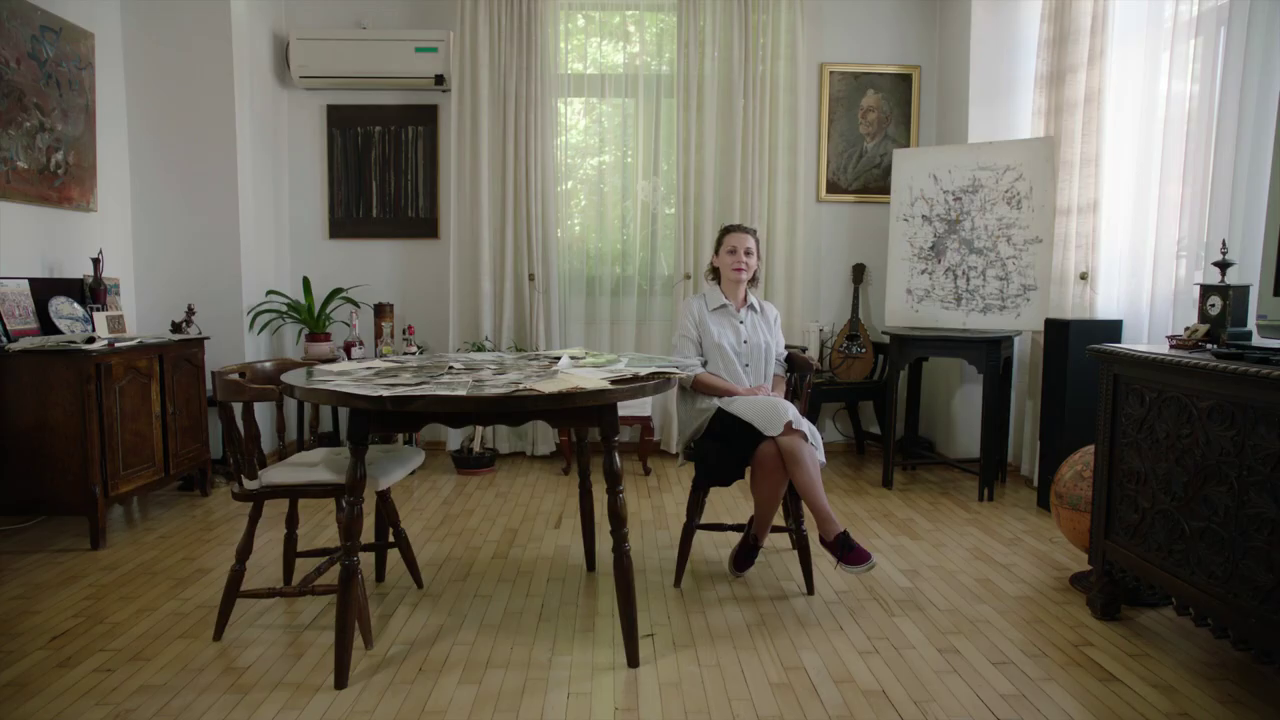Ervant
LOGLINE:
Family, disciples and friends give glimpses of the extraordinary life of the Armenian-Romanian painter, Ervant Nicogosian who learnt to paint in Soviet gulag, worked under the communist dictatorship and painted until he died, in spite of slowly going blind after the 1989 Revolution.
Director’s note
The community I grew up in was made up by intellectuals. Some were artists, some mathematicians and engineers and, obviously, priests. Each one of them, with their poignant eyes and full eyebrows, was a character with an extraordinary life. Most of them were survivors or sons of survivors from the Armenian Genocide in the beginning of the XXth century. Like my grandparents. For them, surviving had become a useful skill because WWII broke out with all its deportations, imprisonments and atrocities.
Some stories need to be told further, long time after the actions happened and the people lived. Same goes for the life story and artworks of Armenian origin and Romanian born artist Ervant Nicogosian. Another grandfather.
Most surviving families were destroyed during WWII, fathers were sent in Siberia and mothers would struggle to find ways to raising their children in postwar famine. Some families, especially those which lived in Odessa, Ukraine, and refused to renounce their Romanian citizenship to the Russian one, were sent together to live for many years in gulags. Being isolated together would make them less of a threat. Unfortunately, some of this tragic stories are said to be happening now in 2022 Ukraine.
This was the case of the Nicogosian family and young Ervant spent his teenage years in several Soviet gulags and this period left deep, unhealable wounds. His life is one of a forever rebel who believes that everything happens for a reason and he wants to understand. Does life and art have a meaning or purpose? Or it’s just a job like any other? Permanent inner revolt. Who am I and what’s my mission ? “Always against the current, constantly against ones self, forever against the villains of history.”, his friend, Bedros Horasangian, used to say.
Quiet, going straight on his artistic road, without being tempted by illusionary experiments, Nicogosian created several fundamental cycles of artworks, trying to pull his own emotions and experiences out of his soul. His artistic cycles are intimately connected to the artist personal life and mostly to his great desire to live and break barriers, to escape a certain artistic conventionalism.
Friends and family give us glimpses of this strange, coleric characters. He seemed to be calm and kind, but he tended to make people angry. Some would call him “En-ervant” which means in Romanian irritating.
The interviews in our film are fairly conventional, but this sobriety will be interrupted by tracking close ups of paintings and objects inside Ervant’s house or handheld shots of exhibitions or mural work. In addition, in remembrance of his haunting theme of windows and gates, the characters will be framed separately at a window or gate, in silence, as if the audience is the point of view of Ervant watching over them from the other side. Another proposition of visual layer is a leit motif with macro close ups of blending colours and sun rays obstructed by different objects.
- Production: Union of Armenians in Romania, ACV Film
- Year: In production
- Genre: Documentary


